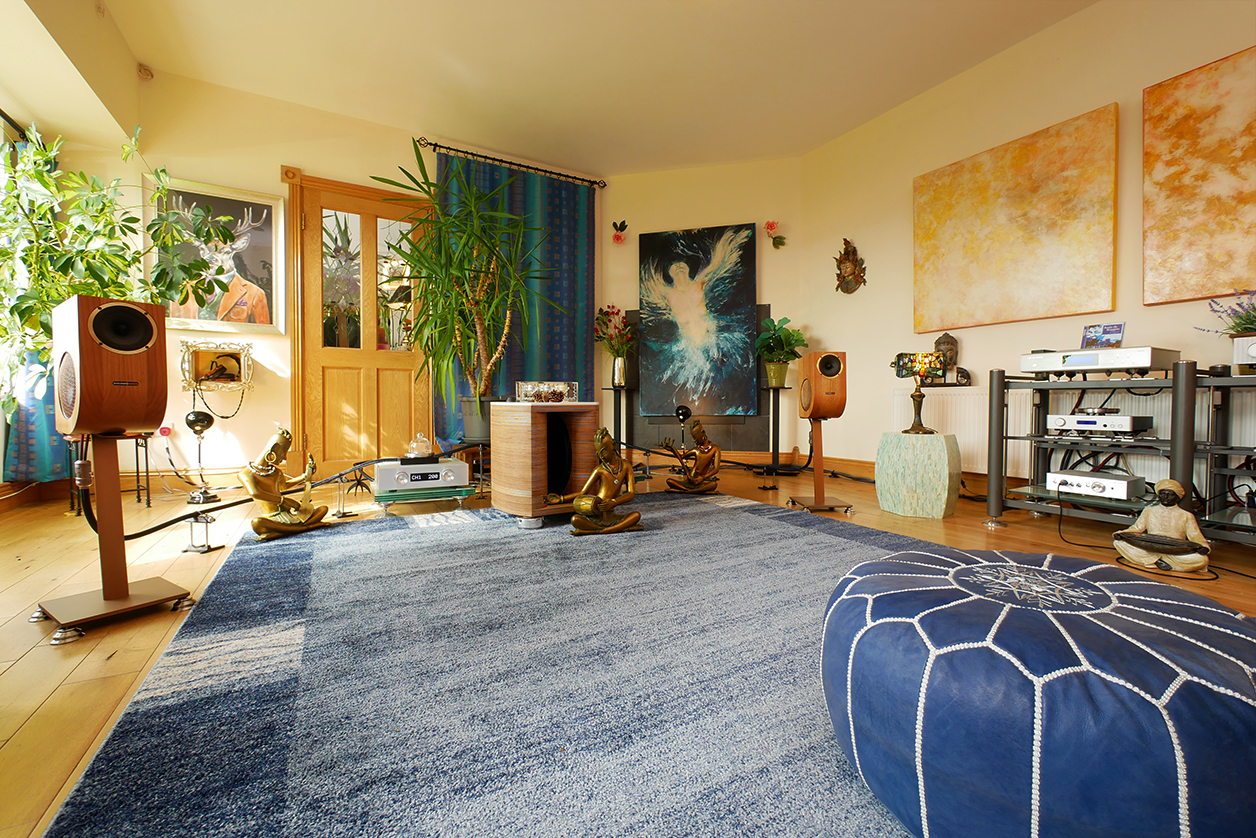Thinking readers already spotted implied small print. If bass is speakerdom's biggest sonic variable; if active bass of proper adjustability can much improve it; wouldn't that minimize differences between various 80Hz+ mains candidates? Certainly cone/dome sizes, transducer geometries and materials, dispersion, sensitivity, filter quality, distortion behavior and more all remain variables. Just so it has been my observation that the bandwidth of difference does shrink. It all gets less important if the most troublesome two lower octaves have already been mastered. The upshot is that a 'lesser' monitor will now go farther. Since it's fronted by an active high pass to no longer struggle with bass, lesser drivers are free to cruise not bruise. And now (whisper) they might just cut a rather finer figure than their price or pedigree predicted. All of this is about working those drivers smarter not harder. On that score, getting lower louder bass is nearly an afterthought. But make no mistake. The difference between 80Hz and 25Hz is enormous. So 25Hz is what I'll bolt onto Raidho's smallest once it gets here. Again, their management was more than happy to oblige. I'd go so far as claim that unless one had a very small room or listened exclusively in the nearfield, doing my 2.1 tango is the only way to enjoy the X1t across all musical genres and SPL. In most cases, they now should also eclipse their bigger costlier purely passive brethren; and not by a small margin. Here is Jonathan Valin's photo gallery of his 2012 factory visit.

In his review of the X1 original, Robert Harley concluded that "when used as intended, in a smallish room at moderate playback levels, the X1 is nothing short of stunning. The treble resolution, transient performance, soundstaging, liquidity, smoothness, ease and freedom from etch are world-class; which is saying a lot in a $6'400/pr speaker. The X1's reproduction of the human voice in particular is uncannily realistic. If you have the appropriate application and expectations, I don't think that you'll find a finer sub-compact loudspeaker than the Raidho X1."
 TD1.2
TD1.2
Today is about the Model t alternative; and playing cancel culture on its built-in limitations. You are fired! For color commentary on equally sub-assisted monitors, I had the MonAcoustic SuperMon Mini, Acelec Model One and sound|kaos Vox 3awf. For pure unassisted nearfield desktop mode, I had the DMAX SC5. With this my first Raidho assignment against having already reviewed Børresen speakers under the Audio Group Denmark umbrella, I had obvious expectations of a sound groomed for exactitude, speed and transient perspicacity not bloom, fullness or extreme decays. What I didn't know? Had Michael Børresen at his new company implemented a sonic course correction? Had Benno Baun Meldgaard and/or Lars Groller revoiced Michael Børresen's original Raidho X1? Without a Børresen Acoustic speaker on hand, I'd only have memory as guide. Far better to ask Raidho themselves what if any changes the XT1 had undergone across their line of lead designers to become the X1t. "We hire in freelancers for specific jobs so there's no single person responsible for these improvements. The speaker now goes 10Hz lower with much better bass articulation and a much more open dynamic sound."
"The X1 and XT1 are from Raidho's old era. Then the 'T' stood for titanium on the ceramic membrane. The X1t is the new version. Now 't' stands for tantalum. The xover has better parts. The internal airflow has been changed. So has the bass reflex port and overall tuning." On Serguei Timachev's Stealth Audio Cables site meanwhile, I found this: "Our Tantalus and Tanto interconnects are made of ultra-thin pure tantalum wire which of all the non-amorphous materials we have tested is sonically closest to Indra and Sakra [which use a rare military-grade amorphous alloy – Ed]. Tantalum stabilizes signals from lower currents at higher frequencies for more clarity and resolution." Serguei goes on to say that "we chose tantalum because most audiophiles are aware of Audio Note's tantalum resistors as the best-sounding resistors available. That makes the new cable easier to market and promote."

If we harvest Wikipedia for more tantalum, we learn that its chemical inertness makes it valuable for laboratory equipment and as a substitute for platinum. Its high melting point is exceeded only by the metals tungsten, rhenium and osmium; and carbon. Tantalum exists in the crystalline alpha and beta phases. The former is relatively soft. Beta is hard, brittle and has a tetragonal crystal lattice. Beta usually exists as a thin film obtained by magnetron sputtering, chemical vapor deposition or electro-chemical deposition from an eutectic molten salt solution. It points at the hi-tech processes and machinery involved to create an ultra-thin tantalum layer on a speaker cone as one way to advance our sector's classic reliance on cellulose and simple metallic cones. It's done in the name of harder, lighter and higher (break-up) without sacrificing inherent self damping. Elsewhere efforts are made to revisit the dynamic driver's suspension—think Audio Physic, Cube, Ilumnia, Mark Audio Alpair—whilst Audio Group Denmark keep refining their iron-less motor systems. Because otherwise, little has changed with dynamic cones 'n' domes since the days of Western Electric. If we keep using the same old ingredients, where do we expect progress to really come from? What's that ancient saying about doing the same thing over and over again while expecting better results?